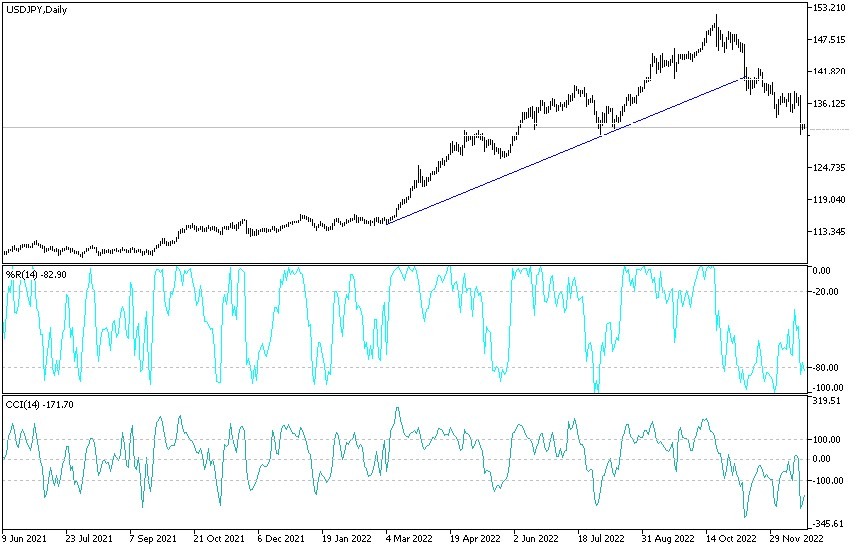This week is a little fluid. The Japanese yen achieved its best performance this year after the Bank of Japan (BoJ) shocked global financial markets and raised the yield on the benchmark 10-year government bond. The news sent Asian markets lower while US stocks rebounded from their early lows in the session.
Can the Japanese yen recover some of its losses as 2023 approaches?
Sharp selling operations pushed the USD/JPY exchange rate towards the psychological support level 130.56, before settling around the resistance level 132.25 at the time of writing, waiting for anything new.
Officials at the Bank of Japan allowed the 10-year yield to move 50 basis points either side of its 0% target, up from the previous range of 25 basis points. Policymakers have indicated that the purpose is to revive the dormant bond market, even though the Bank of Japan owns about half of all government bonds. Meanwhile, the Bank of Japan left its yield target unchanged and confirmed that it plans to expand its bond-buying program. This indicates that the institution is planning to slightly revise its ultra-loose monetary policy rather than withdrawing its stimulus efforts. The move is intended to improve market functions, and thus help enhance the impact of our monetary easing. For his part, Bank of Japan Governor Haruhiko Kuroda said in a press conference that, therefore, it is not a rate hike. This change will enhance the sustainability of our monetary policy framework. It is not a review at all that will lead to the abandonment of YCC or the exit of the easy policy.”
Kuroda is scheduled to step down from his post in April.
The policy move sent the Nikkei 225 down 669 points, or 2.46%, to 26,568 points, while the Hang Seng fell 258 points, or 1.33%, to 19,094. The Shanghai Composite fell more than 1%. The Kospi index was relatively flat. Meanwhile, the Japanese bond market was fundamentally higher, with the 10-year yield adding 15.4 basis points to 0.405%. The three-month note fell 2.4 basis points to -0.172%, while the 30-year yield rose 3.5 basis points to 1.56%.
Later this week, economic data and inflation will be released
Japan's annual inflation rate is expected to rise to 3.9%, and the year-on-year core inflation rate, which wipes out the volatile food and energy sectors, is expected to rise to 3.7%. Overall, the Japanese yen was one of the worst performers in the global forex markets, depreciating nearly 15% against the dollar.
Forecasts of the US dollar against the Japanese yen today:
- There is no change in my technical view of the performance of the price of the USD/JPY currency pair, as the general trend turned bearish.
- Its recent losses were sufficient to push all technical indicators towards oversold levels.
- Accordingly, forex traders may consider taking advantage of the collapse to start thinking about buying.
- The support levels 130.50 and 129.60 will be the most suitable for thinking about that.
I still prefer to buy the dollar / yen from every downward level, as the divergence in the future of tightening monetary policy by central banks and economic performance will eventually be in favor of the US dollar. According to the performance on the daily chart, a return to the vicinity of the resistance 137.50 will be important for the bulls to regain control. The currency pair will be affected today by the announcement of the growth rate of the US economy and the number of weekly jobless claims.
Ready to trade our Forex forecast? Here’s a list of some of the best Forex trading platforms to check out.

